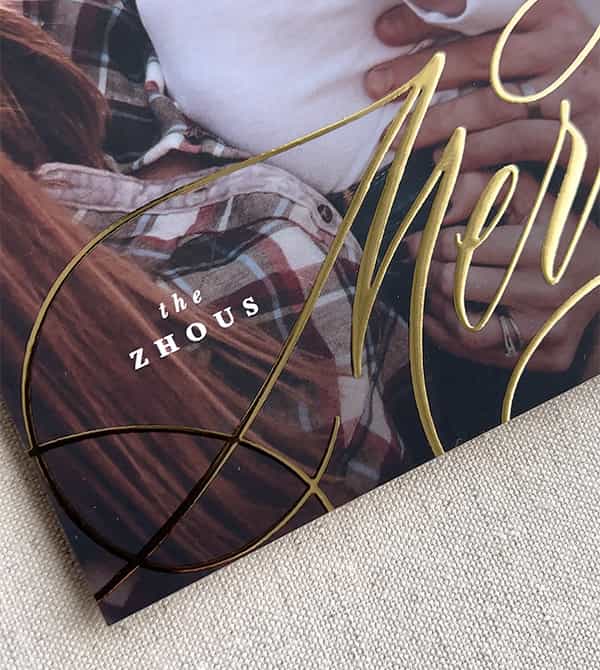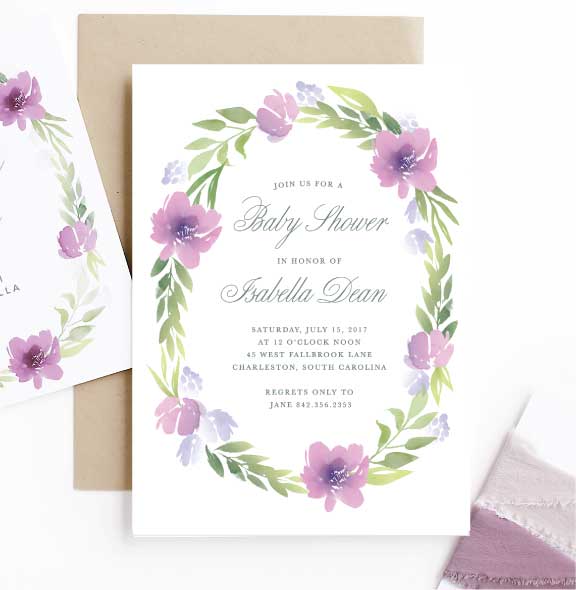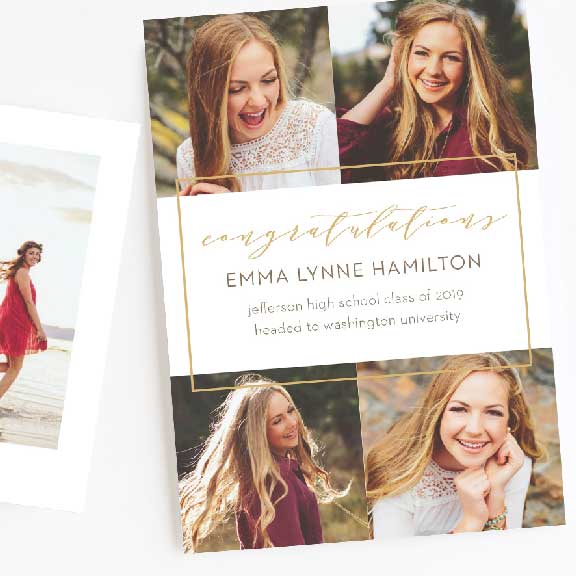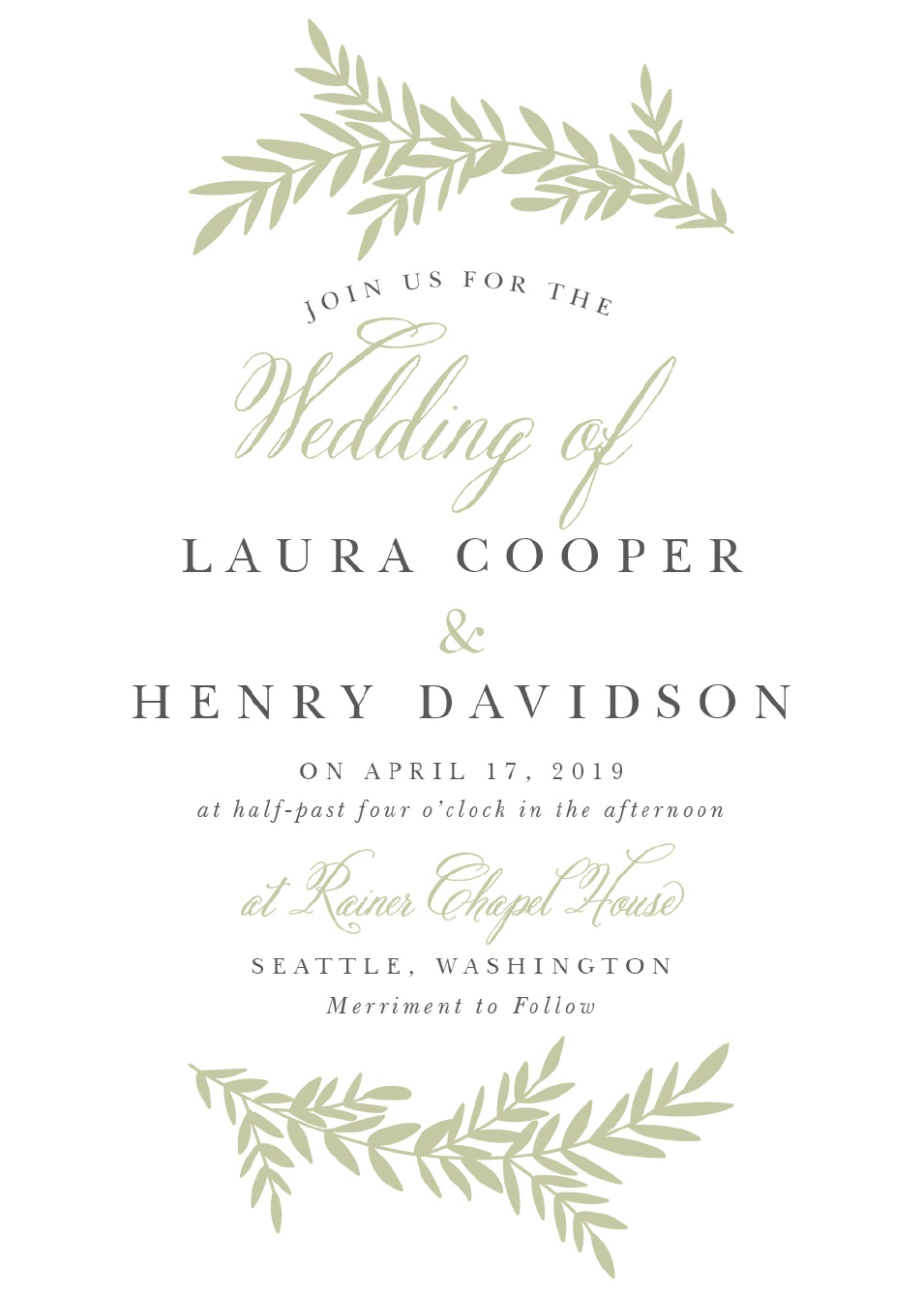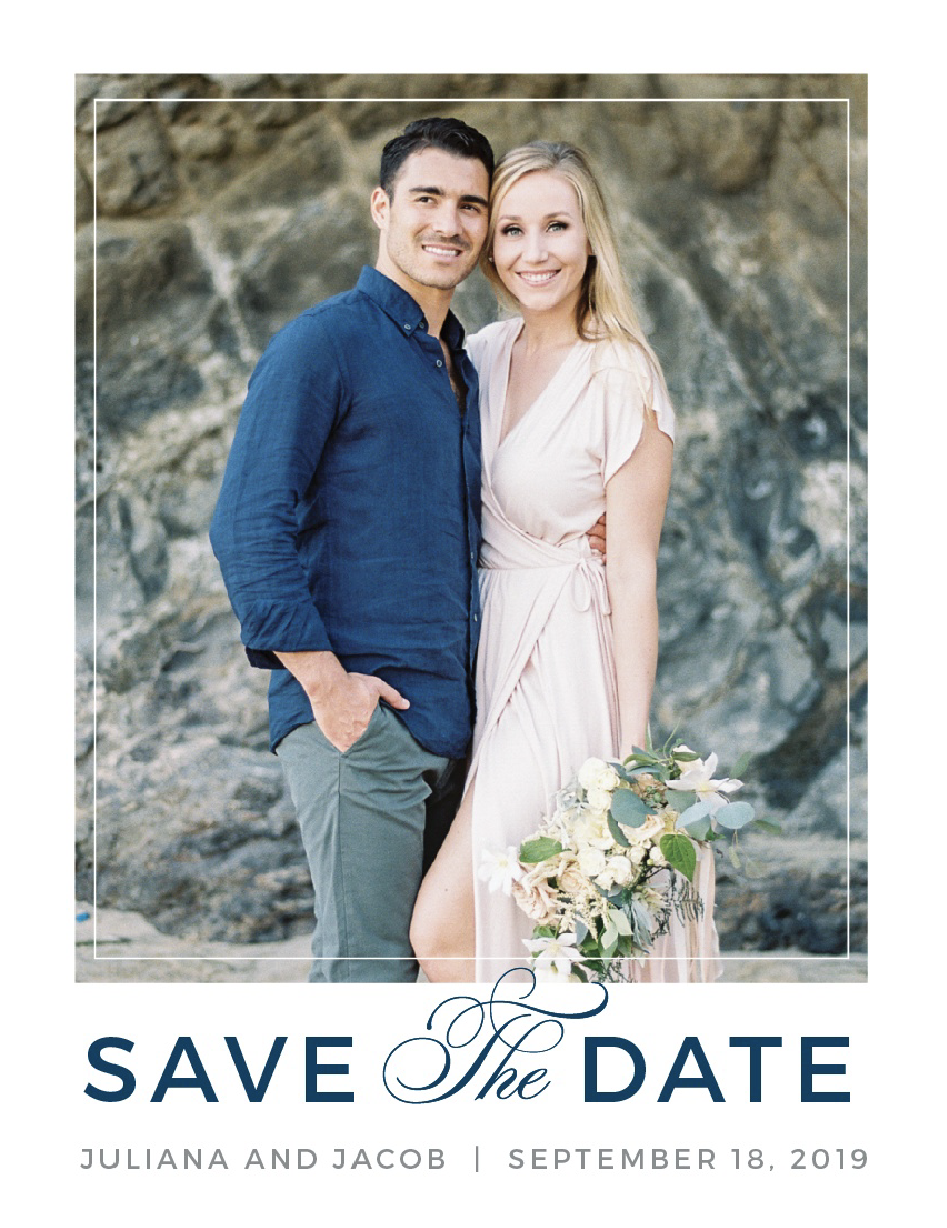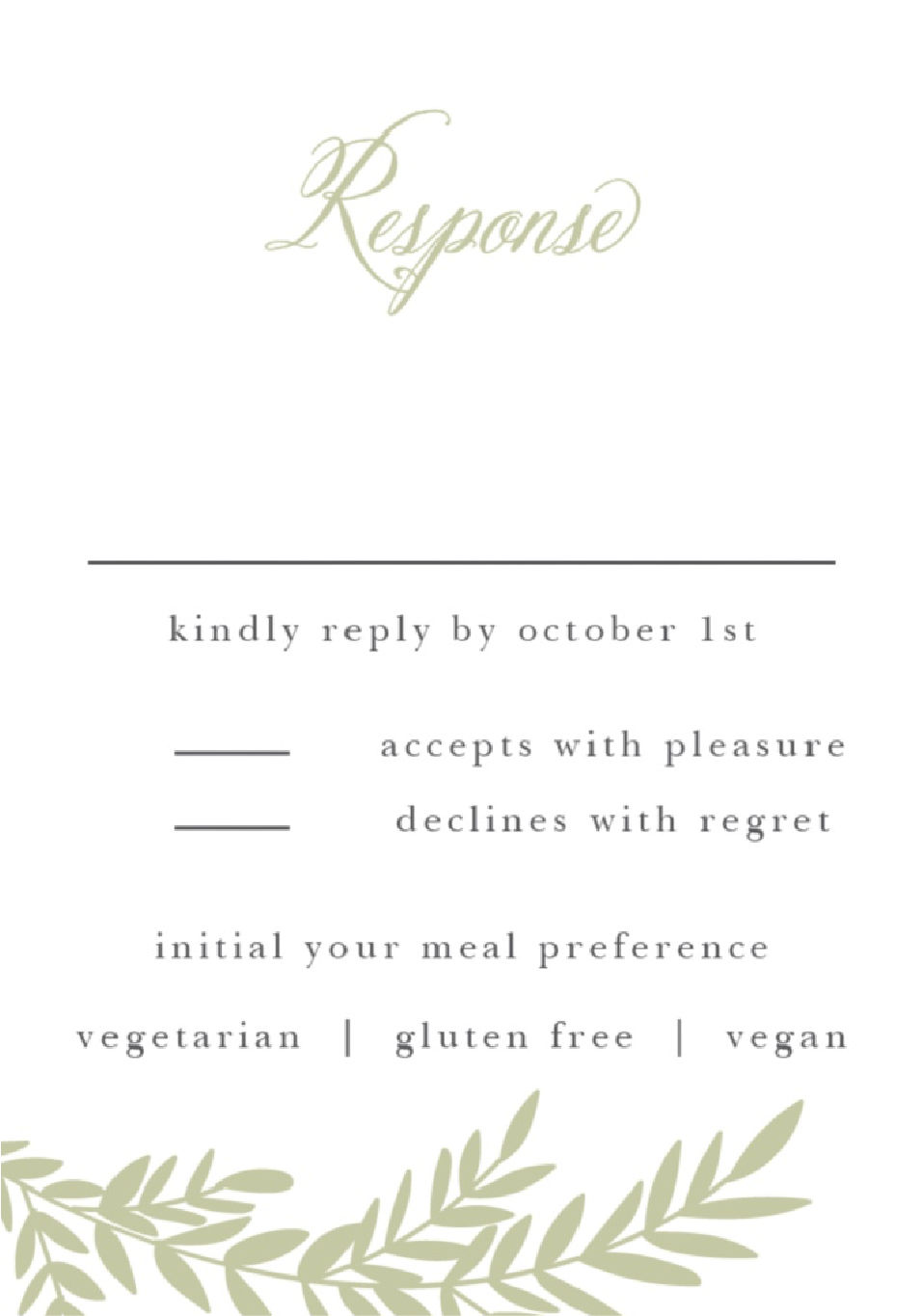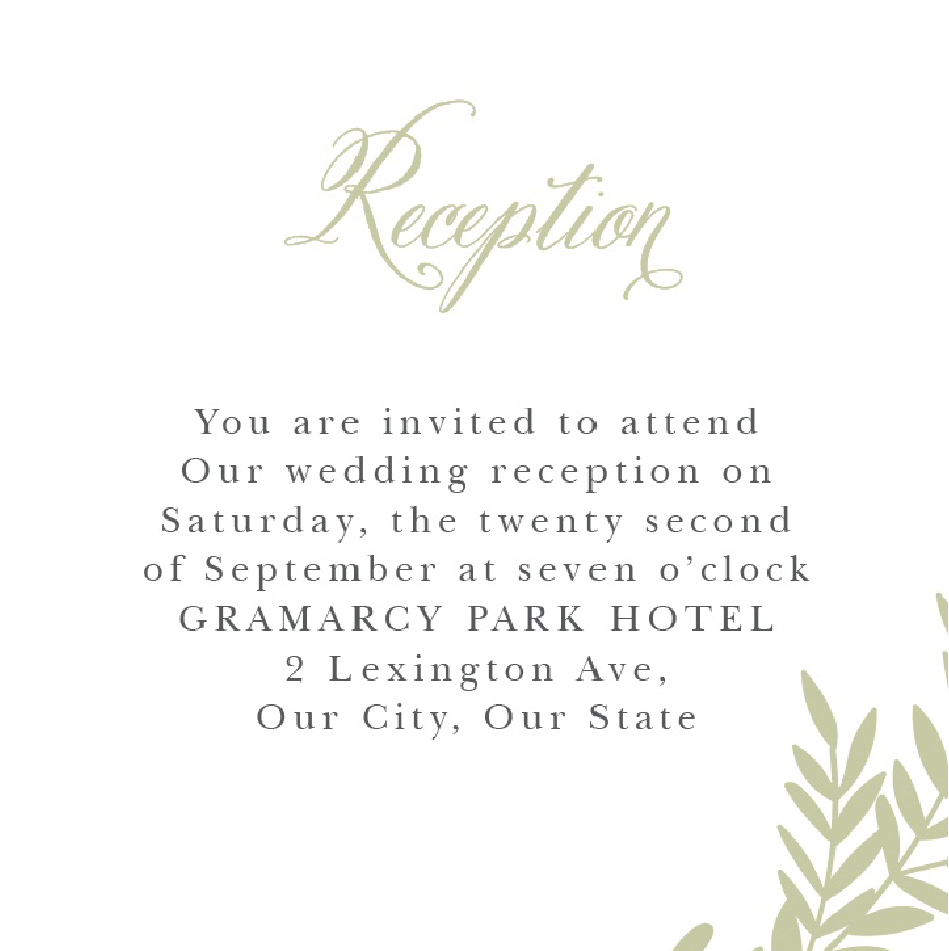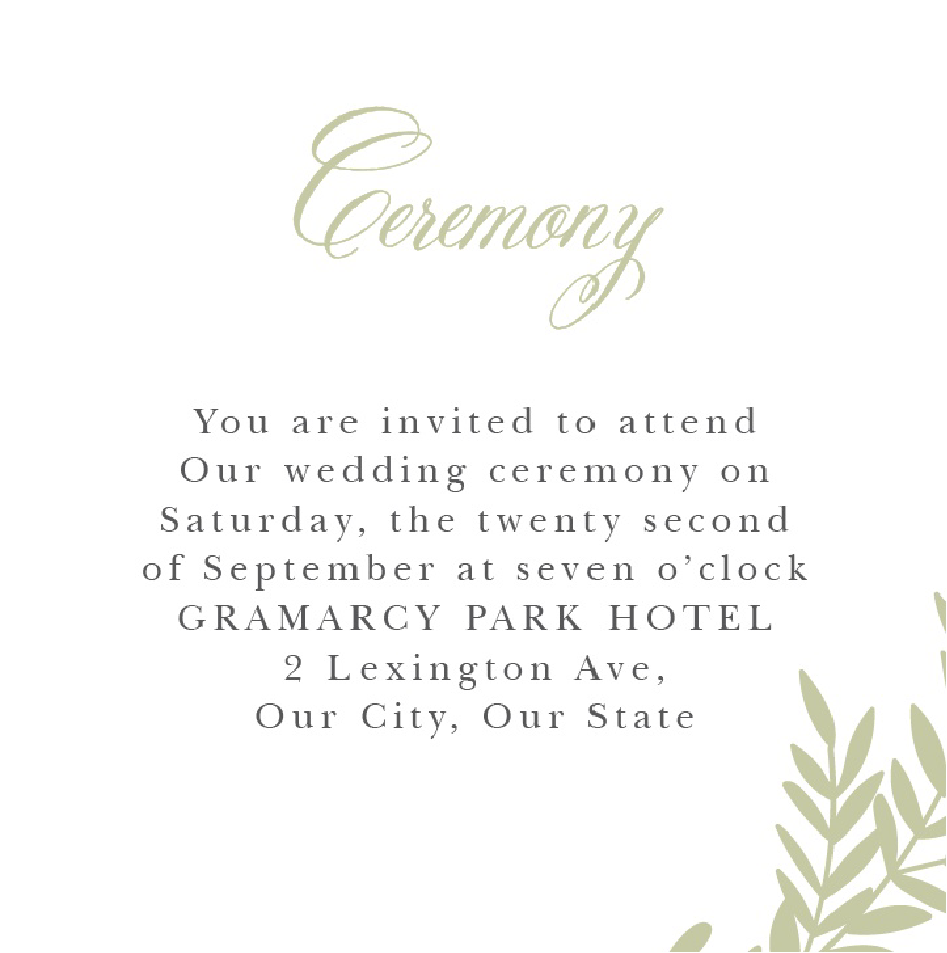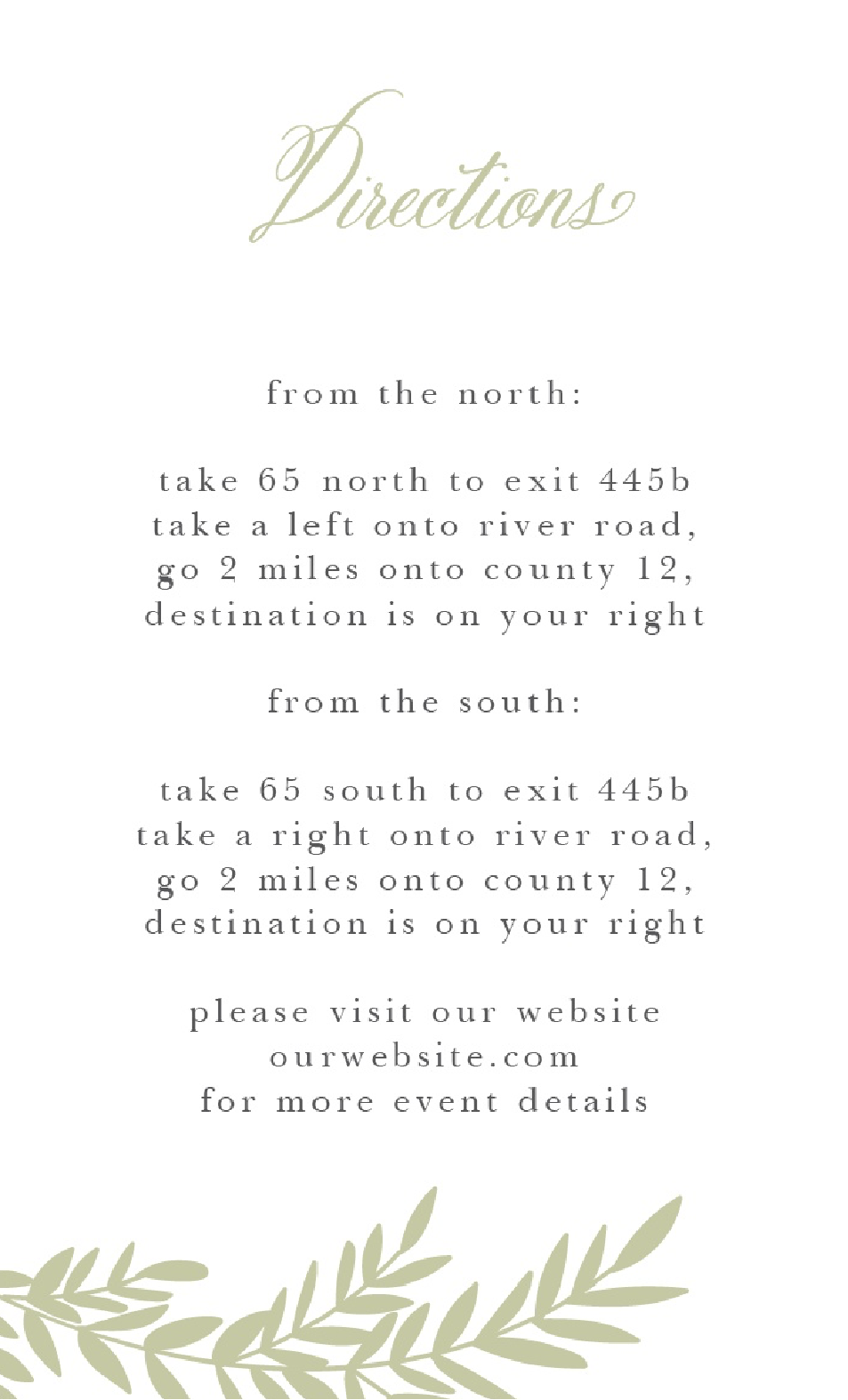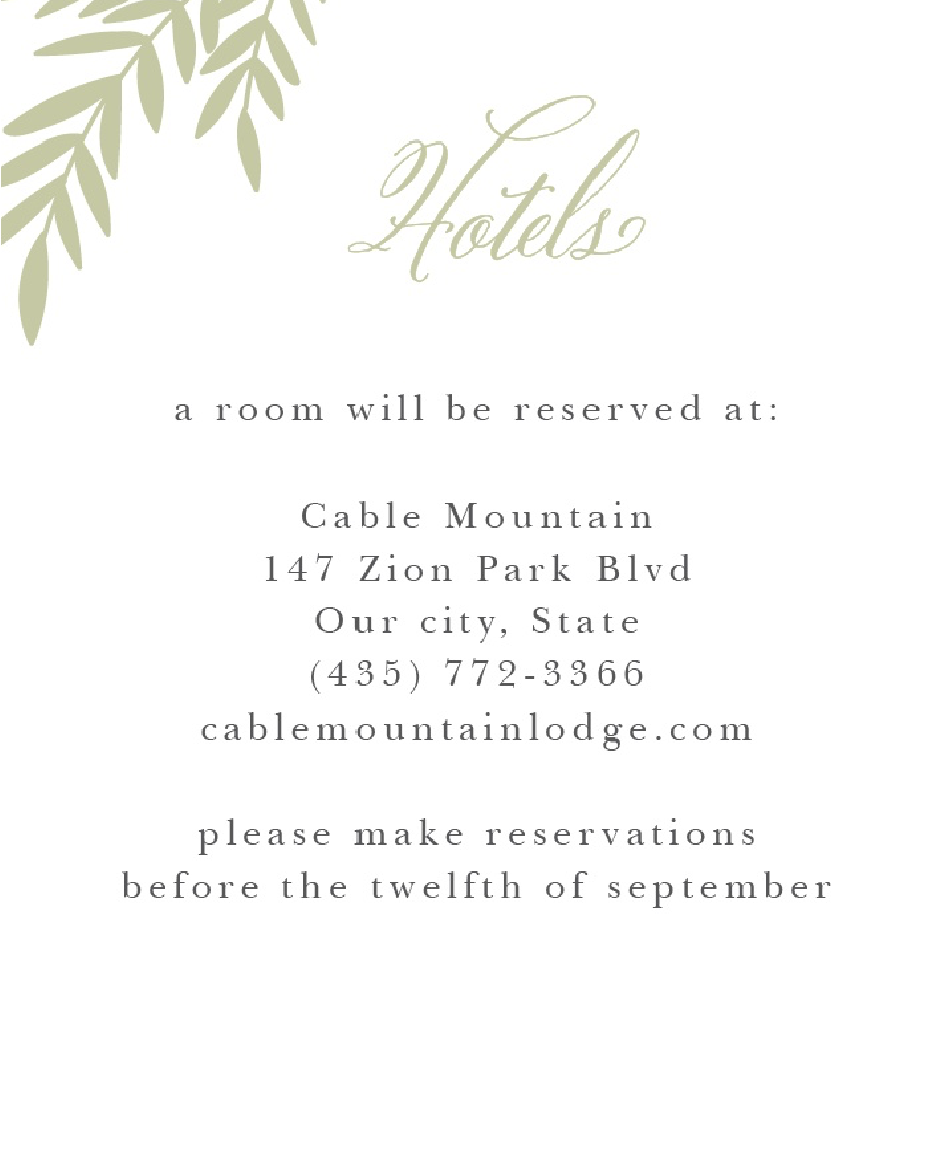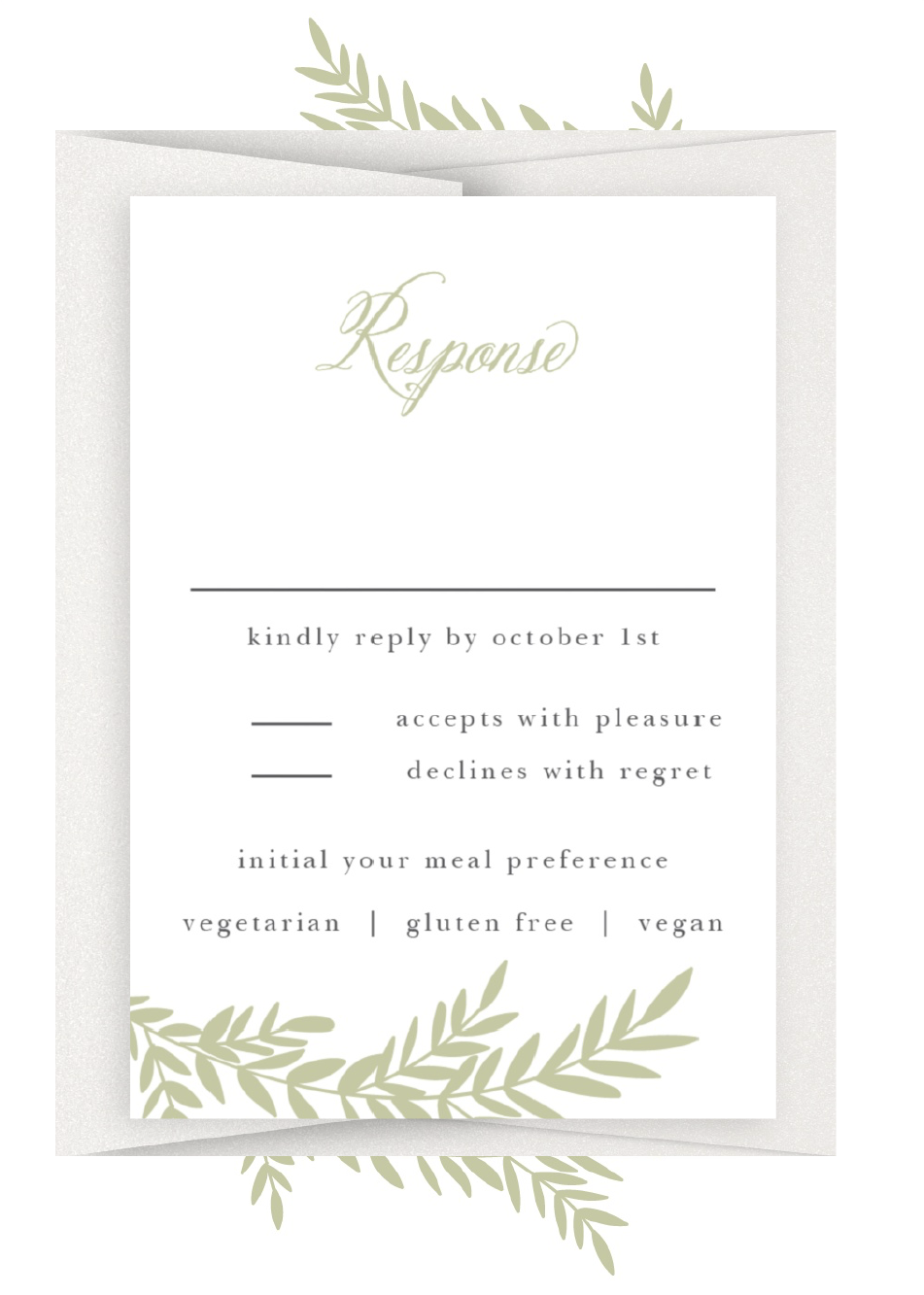Elements of An Invitation
Invitation
The invitation should inform guests of the names of the happy couple, the date, time, and place of the event.
Wedding invitations are typically mailed out 2 to 3 months before the wedding date, or 4 to 5 months for destination weddings or weddings with many out-of-town guests.
← back to topSave The Date
Save The Date cards are commonly for destination weddings. Save the dates help your guests plan and are a welcomed convenience for your guests.
Typically, Save The Date cards do not contain more information than a wedding date, location, and link to your website. Save The Dates are sent out from 6 to 8 months in advance.
← back to topResponse Cards
Currently, the most popular method of obtaining guest counts is to send out a response or RSVP card. Most brides ask that replies be returned at least one month before the wedding date.
Include a return address and a stamp on the reply envelopes.
A new and less expensive option is to have your guests RSVP via your Free Wedding Website.
← back to topReception Cards
Some couples opt to have a public ceremony, followed by a private reception that is by invitation only.
When this is the case, the main invitation should only list the time and location of the ceremony. Then, add a special reception card to the envelopes of those guests invited to the reception.
Reception cards are usually smaller than your invitation and include only the time and location of your reception.
← back to topCeremony Cards
Additionally, some couples opt to have a private ceremony, followed by a public reception that is by invitation only.
When this is the case, the main invitation should only list the time and location of the public reception. Then, add a special ceremony card to the envelopes of those guests invited to the ceremony.
Ceremony cards are usually smaller than your invitation and include only the time and location of your ceremony.
← back to topRegistry
Previously, it was considered taboo to mention your registry information, but today registry cards and websites are a convenience to your guests.
Registry cards are usually quite small, and typically include a simple link to your Free Wedding Website, or the names of the places where you are registered.
← back to topDirections
If your venue is a destination, or difficult to navigate to, you may want to include a directions card in your invitation suite.
Commonly, these cards include directions from local hotels or airports.
It is also possible to share directions and maps directly through your Free Wedding Website.
← back to topHotels
If your venue is a destination, or you have invited many out of town guests, you may want to include a hotel card in your invitation suite.
Commonly, hotel cards include preferred hotels close to your venue, or hotels you have procured a group rate for your wedding.
It is also possible to share hotels and local services directly through your Free Wedding Website.
← back to topAssembly
Assemble your wedding invitations in size order. The invitation is first, followed by enclosure cards. Stack smaller cards on top of your invite in size order.
If your wording is not right-side-up when your guests open the envelope, insert the cards so that when pulled out of the envelope with the right hand they are of proper orientation.
← back to top



